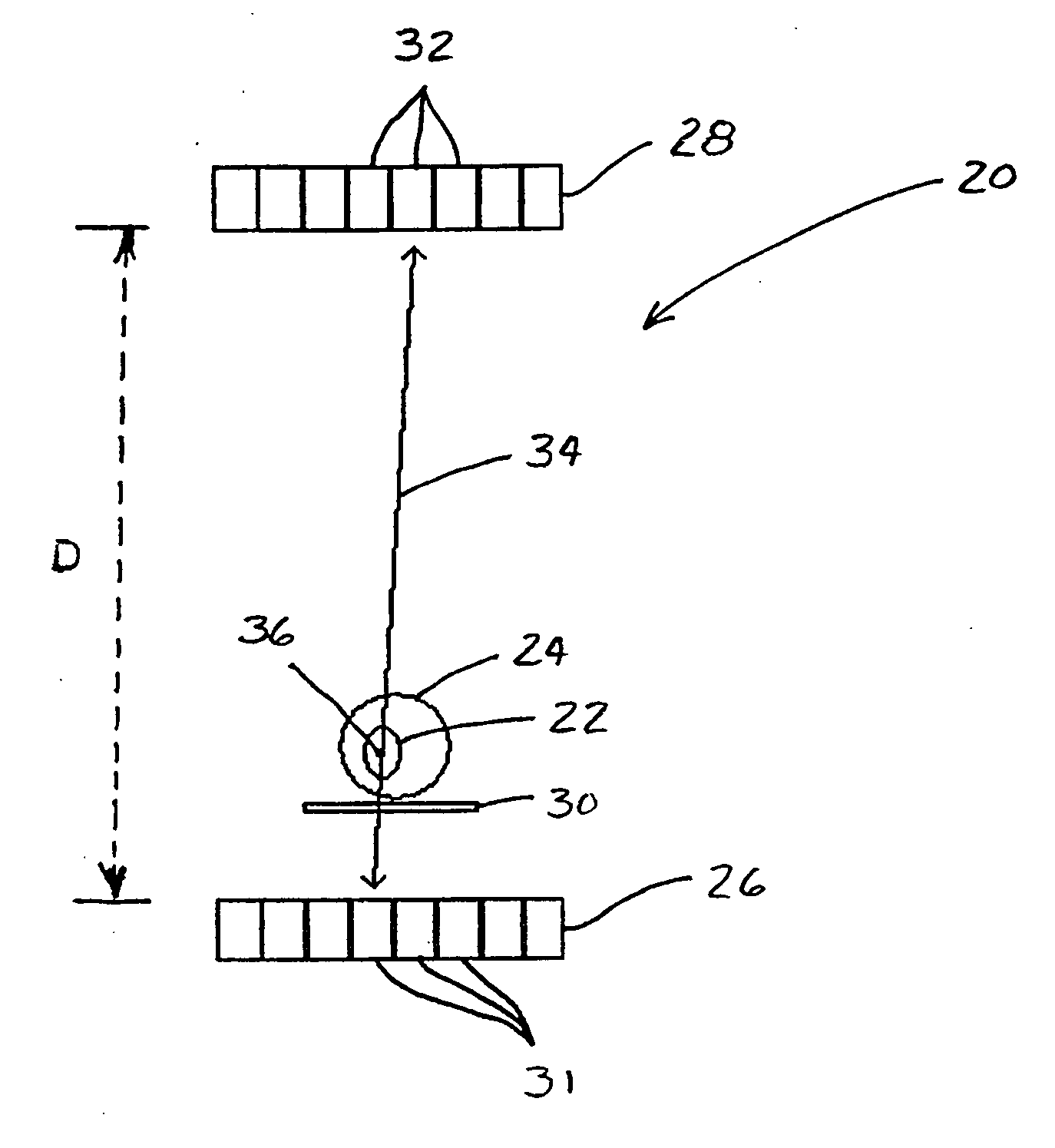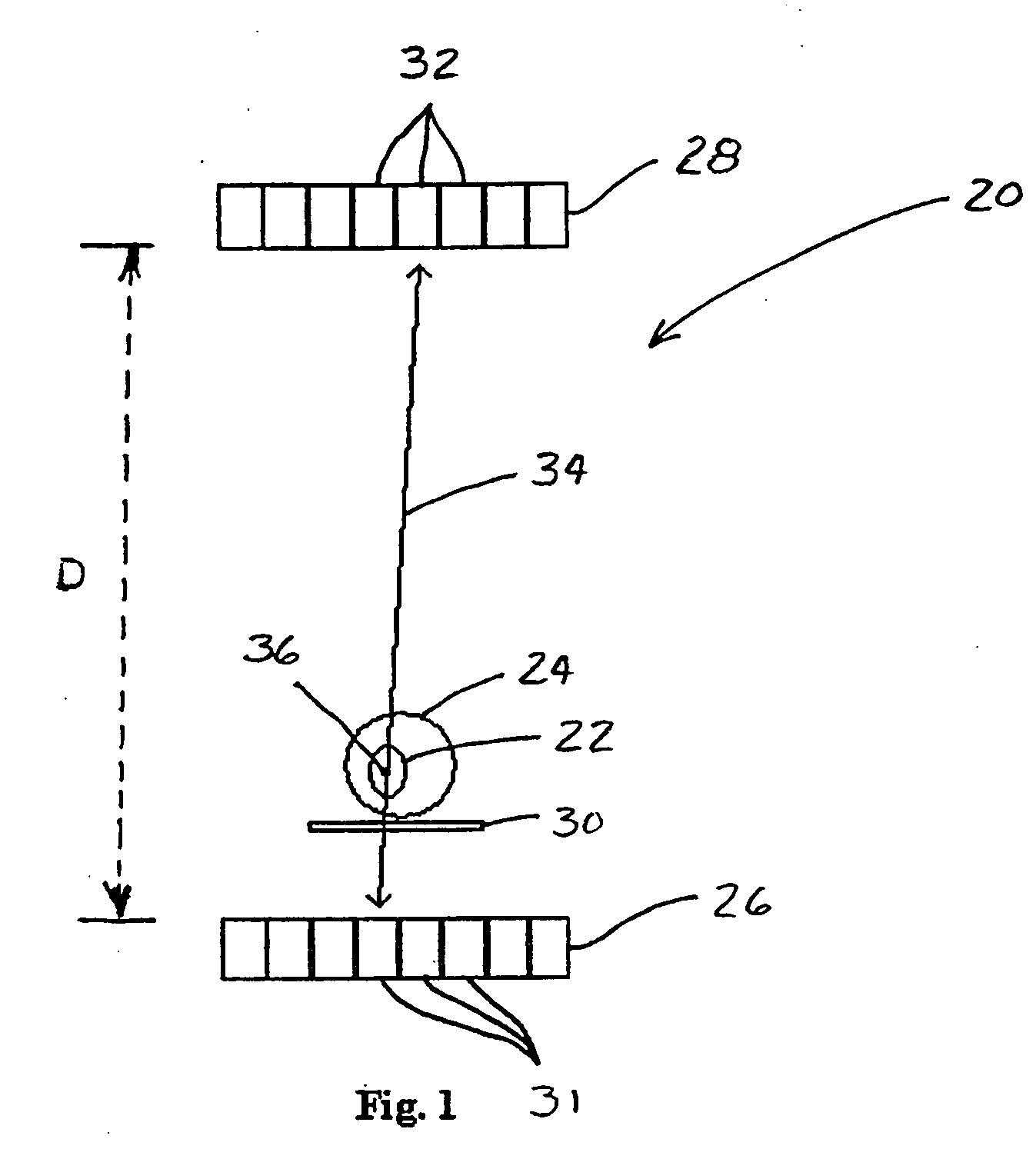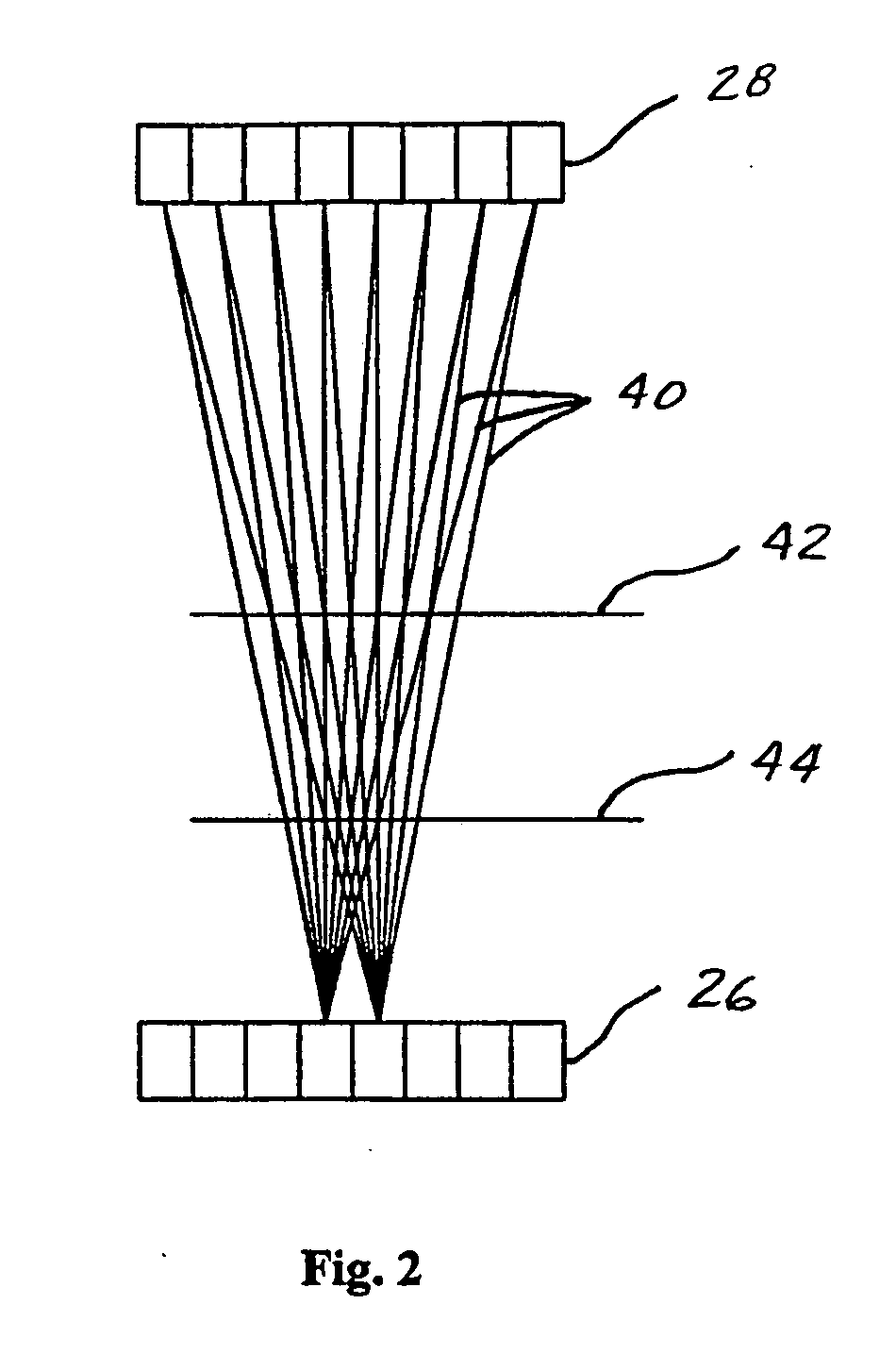Method and apparatus for increasing spatial resolution of a pet scanner
a technology of positron emission tomography and scanners, applied in the field of pet scanners, can solve the problems of significant reduction of detecting efficiency, reduced resolution compared with conventional gamma cameras, and inability of conventional pet scanners to achieve image resolution higher than detector intrinsic spatial resolution, etc., to achieve the effect of increasing the resolution of an imag
- Summary
- Abstract
- Description
- Claims
- Application Information
AI Technical Summary
Benefits of technology
Problems solved by technology
Method used
Image
Examples
Embodiment Construction
[0029] Referring now to the drawings and in particular to FIG. 1, a positron emission tomography (“PET”) scanner is designated in its entirety by the reference character 20. The scanner 20 provides an image of a region of interest 22 of an object 24. The scanner 20 comprises opposing first and second detector arrays 26, 28, respectively, spaced by a distance D and a stage 30 for holding the object 24 between the arrays. The first detector array 26 is formed from a series of adjacent gamma-ray photon detectors 31, and the second detector array 28 is formed from a series of adjacent gamma-ray photon detectors 32. The detectors 31 of the first detector array 26 have intrinsic spatial resolutions equal to or preferably better than intrinsic resolutions of the detectors 32 of the second detector array 28. Better intrinsic spatial resolution, in other words resolution capable of distinguishing smaller structures of the object, may be achieved through a variety of known methods including, ...
PUM
 Login to View More
Login to View More Abstract
Description
Claims
Application Information
 Login to View More
Login to View More - R&D
- Intellectual Property
- Life Sciences
- Materials
- Tech Scout
- Unparalleled Data Quality
- Higher Quality Content
- 60% Fewer Hallucinations
Browse by: Latest US Patents, China's latest patents, Technical Efficacy Thesaurus, Application Domain, Technology Topic, Popular Technical Reports.
© 2025 PatSnap. All rights reserved.Legal|Privacy policy|Modern Slavery Act Transparency Statement|Sitemap|About US| Contact US: help@patsnap.com



